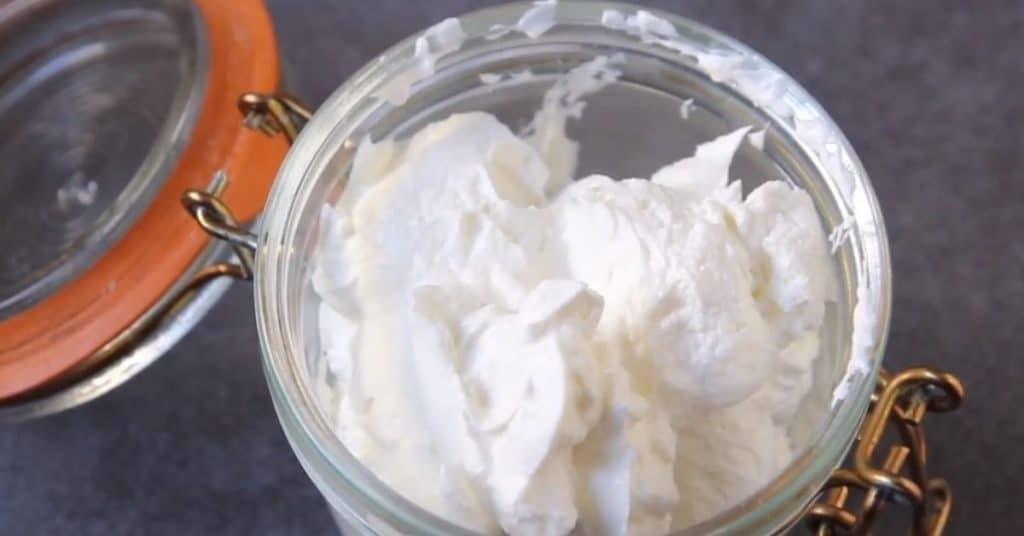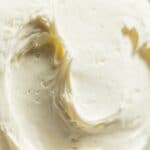In a nutshell: Yes, you can freeze cream cheese, but the texture may change slightly upon thawing. It is still perfectly safe to use in cooked dishes or recipes that require melted or blended cream cheese.
Smooth, soft, and velvety, cream cheese is an incredibly versatile fresh cheese used in both savory and sweet applications. This mild dairy product is great for serving fresh, incorporating into baked goods, and using in cooked meals.
Cream cheese is not cheap, so being able to freeze it is a great way to make use of store specials and buy in bulk. Having cream cheese handy for last-minute cooking is always a tasty addition that adds some extra pizzazz to any meal.
Cream cheese denatures when exposed to varying temperatures—meaning that special precaution needs to be taken to ensure it stays safe to eat, to preserve its taste as well as its creamy texture.
Here is everything you need to know when it comes to freezing cream cheese.
Can Cream Cheese Be Frozen?
Yes, you can freeze cream cheese, however, as with most dairy products, and especially with cream cheese frosting, the texture of the cream cheese will not be the same after thawing as it was fresh.
Once you thaw frozen cream cheese, it may not be great to eat as is but when added to a cooked meal, you won’t even notice that it has spent time in the freezer.
The amount of milk fat present in cream cheese can play a big role in how well it freezes since the moisture partially separates from the fat on thawing. This causes the perfect texture of silky-smooth cream cheese to become more crumbly.
Full-fat cream cheese is best suited for freezing while reduced-fat or fat-free cream cheese may separate more drastically due to the higher water content.
How To Freeze Cream Cheese
You can freeze unopened cream cheese in its original packaging by placing it directly in the freezer. The foil wrapping and plastic container of products like Philadelphia Cream Cheese will be enough to store it safely.
For an extra measure of protection, wrap the unopened container in a layer of plastic wrap. Never freeze cream cheese if it has passed the expiration date.
If you have already opened cream cheese or the cream cheese is packaged in a cardboard box, use the following steps to preserve it in the freezer with minimal quality changes.
Step 1: Quality Check
Since it is a fresh and highly perishable product, cream cheese should be frozen well before the expiry date. If the refrigerated cream cheese is already starting to spoil, it should be discarded and is not suitable for freezing.
Step 2: Portion and Package
Freezing the cream cheese in smaller portions not only prevents drastic textural changes but also allows you to only thaw as much as you need at a time.
Divide the cream cheese into smaller portion sizes considering how you may use it in the future. Place each portion in a resealable (airtight) freezer bag.
If you do not have freezer bags, wrap the soft cheese in plastic wrap and place it in a freezer-friendly airtight container.
Step 3: Remove Air
Lie the ziplock bag flat and press out all the air before sealing. On contact with air and moisture ice crystals form which will damage the texture. Removing all the excess air will help to prevent freezer burn.
Step 4: Label
Keep track of how long the cream cheese has been in the freezer by labeling the bag with the storage date. Place the cream cheese in the freezer being careful that other items do not squash it.
How To Defrost Frozen Cream Cheese
The safest way to defrost cream cheese is to place it in the refrigerator overnight. Remember that the extreme change in temperature denatures the cream cheese and may alter the texture making it suitable only for use in baking or cooking after it has been frozen.
If it has separated, stir the cream cheese to reconstitute the creamy consistency. You can even add a little heavy cream to help it along. Once thawed, use it within 3 days and never refreeze.
Types of Cream Cheese
Cream cheese is a soft cheese with a mild sweetness and tang. Made with cow’s milk and cream, it is generally known as full-fat cheese, however, it also comes in low-fat and nonfat versions.
Unlike many other kinds of cheese, cream cheese is not naturally matured and is consumed fresh. Commercial cream cheese production uses the addition of stabilizers to enhance the smooth texture and shelf life.
Its mild flavor makes it suitable for both sweet and savory cooking. It is often spread on bagels, bread, and crackers, used as a dip or in salads. Cream cheese flavorings such as smoked salmon, herb, spring-onion, and sweet-chili have become popular for spreads and dips.
When it comes to cooking, cream cheese can be used to thicken sauces, add a creamy element to stews, soups, and baked dishes, to make cheesecake, cake frosting, pastry fillings, cakes, and cookies.
FAQs
Conclusion
If you love cream cheese and can’t resist the two-for-one deal in store, the great news is you can save money and freeze the extra block for later use.
While freezing may alter the texture of cream cheese, there are still a host of recipes in which you can successfully incorporate thawed cream cheese. To make your frozen cream cheese creamy again, simply stir it well once defrosted. Full cream varieties are best for freezing and can last up to six months in the freezer if well sealed.
Always store cream cheese in the refrigerator. Leaving it at room temperature increases the risk of harmful bacterial growth and contamination. Fresh or frozen, incorporating cream cheese into a dish is a fantastic way to add a touch of velvety sumptuousness.
Up Next:









